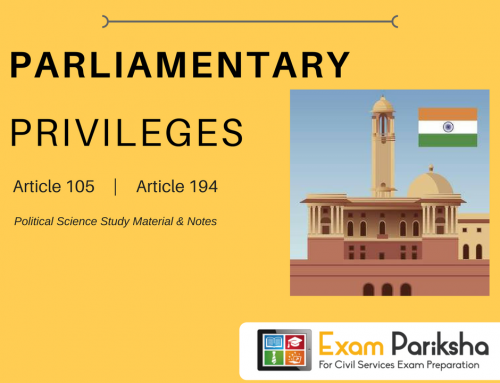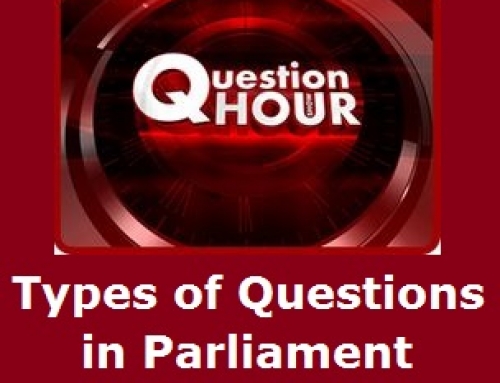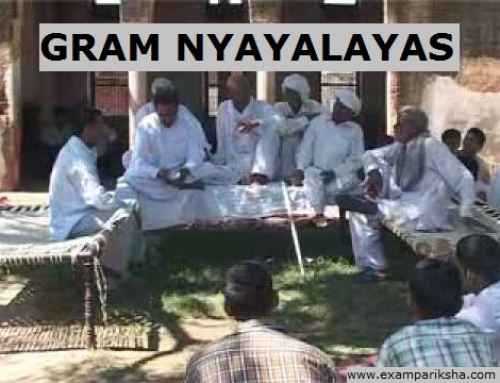The Parliament is basically Legislature, i.e., a law making body. Therefore ,any proposed law is introduced in the Parliament as a Bill. After the bill is passed by the Parliament and receives the Presidential assent, it becomes a law.
There are two kinds of bills in the Parliament:-
- Ordinary bill and
- Money bill.
Ordinary Bills:
Each member of the Parliament can introduce an ordinary bill under Article 107. Ordinary bills are those bills for whose passage, simple majority of the house is required. There are two types of ordinary bills, namely – Government bills and Private member’s bills.
- Private Members’s bill: Any bill moved by a non-minister is a Private Member’s Bill. these bills have very less probability of becoming a law since they are usually not backed by majority support( it lies with the government).
- Government bills: Any bill introduced by a minister of the Central Government is called government bill. These bills consume maximum time of the Parliament.
Money Bills:
- Money bill falls under Article 110 of the Constitution.
- It is an ordinary bill which can only be introduced in Lok Sabha with prior approval of the President.
- In case of a dispute regarding the status of the bill, the Speaker decides whether it is a money or not.
- Money bills deal with matters of money, like – imposition of taxes, governmental expenditure and borrowings etc.
- After being passed in the Lok Sabha, it is sent to the Rajya Sabha.
- Rajya Sabha has very limited powers in this regard. It has to dispose money bill in 14 days after which the bill is considered to be passed by the upper house even if it has not done so.
- Rajya Sabha can make recommendations on the money bill but Lok Sabha is not bound to accept them.
- Then it is sent to the President for his approval. He has to give his assent to the money bill since it is introduced in the house with his prior permission.
- Definition of Money Bill – “The bill that deals with the money matters i.e. imposition, abolition, alteration of any tax or the regulation of the borrowing of money or giving of any guarantee by the Government of India or amendment of law with respect to any financial obligation undertaken by the Government of India or related to Consolidated Fund or Contingency Fund of India, is called a Money Bill.”
The procedure of lawmaking in Parliament of India:
A bill is drafted and then introduced in the house for discussion before it becomes a law. Following steps are taken in the course:
Stage 1: First reading
The legislative procedure begins with the introduction of the bill in either houses of Parliament. It can be introduced by either a minister or a private member, as explained above. The presiding officer of the house is informed first. The officer puts the question of introduction of bill before the house, if approved(generally by voice vote), the person introduces the bill. This is the first reading.
Stage 2: Publication in gazette
After the bill is introduction, it is published in the official gazette.
Stage 3: Reference to the Standing Committee
The presiding officer can refer the bill to the concerned standing committee for thorough study and examination of general principles and clauses of the bill. After consideration, the committee submits a report on the bill to the house. This report serves as reliable advice by the house.
Stage 4 : Second Reading
This is a very crucial stage. A general discussion takes place over the bill in the house. There it can be referred to a select or joint committee for a clause by clause consideration along with expert opinion. Alternatively, the house can consider the bill clause by clause as introduced or reported by the select or joint committee. Here discussions take place. Putting this procedure in a quick revision pattern, please go through the following bullet points; After general discussion, the house can –
- straightaway go into detailed clause by clause consideration.
- refer that bill to a select committee of the House.
- refer it to the Joint Committee of both Houses.
- circulate it among the people to elicit public opinion.
Stage 5: Third Reading
After the completion of the second reading, the member-in-charge can move that the bill be passed. At this stage any discussion is confined to arguments regarding passage or no passage of the bill. Then voting happens and fate of the bill is decided.
Stage 6: Bill is sent in the other House
After being passed by one house , the bill is sent to the other house for consideration. In the second house also, the bill goes through first reading, second reading and third reading. There are four actions that might be taken up the other house:
- It can pass the bill in the form sent by the first house. Then the bill is sent to the President for his assent.
- It can pass the bill with amendments. Then the bill has to be returned to the first House for reconsideration. If the first house does not agrees to the recommendations, then there is a deadlock.
- It may reject it altogether. This means there is a deadlock which can can be resolved by a joint sitting.
- It may not take any action on the bill and keep it pending.
Stage 7: President’s assent to the Bill
Every bill is presented to the President for his approval after being passed by both the houses of Parliament for his assent. The President can take up any of the three alternative action over the bill.
- He may give his assent to the bill. Thereafter, the bill becomes a law.
- He may return the bill with suggested changes for reconsideration of the House of its origin. However, if both houses pass the bill again ( with or without changes), the President has to give his assent. This is known as Suspensive veto of the President. It is not applicable on Money bills though.
- He may withhold his assent, neither ratifying it nor rejecting it. this is known as the Pocket veto of the President. It was used for first time in 1986 by President Zail Singh with respect to the Indian Post Office Bill. This is not a explicit veto mentioned in the Constitution but is excercised by the virtue of no time frame mentioned for giving assent to the bill.





